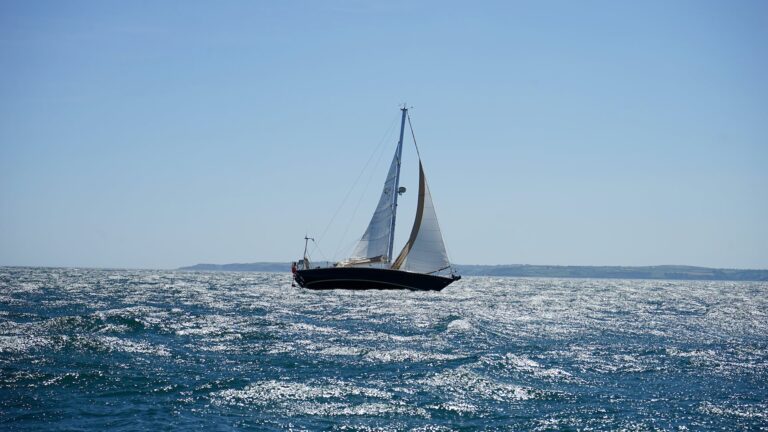How Windy Is Too Windy?
How Windy is Too Windy? A Sailing Expert’s Guide to the Dangers of High Winds
When it comes to sailing, wind is essential, without it, a sailor is stuck at port, unable to reach their destination or enjoy the open sea.
But while a strong breeze can be a boon to a sailor’s journey, strong winds can also lead to dangerous conditions that could prove hazardous even for experienced sailors.
So how windy is too windy? This article will provide an overview of the dangers of high winds and what sailors should look out for when they’re out on the water.
What is Wind?
Wind is simply the movement of air molecules from one part of the atmosphere to another, when air pressure changes, air molecules move from an area of higher pressure to an area of lower pressure in order to equalize the differences in air pressure, creating what we call “wind”.
The strength of this wind can vary depending on conditions like temperature, humidity, terrain and elevation, this means that even if two sailors are in similar locations, they can experience different levels of wind due to slight variations in these conditions.
What Makes Wind Conditions Dangerous?
Sailing in high winds can be dangerous for several reasons: firstly, as the strength and speed of wind increases, so does its potential to cause damage and injury, secondly, strong winds combined with choppy waters can increase a vessel’s rocking motion and make it harder for sailors to maintain control, and thirdly, strong gusts or sudden changes in wind direction can reduce visibility and create hazardous situations at sea.
High Wind Warning and Its Implications
The National Weather Service (NWS) issues a “High Wind Warning” when sustained speeds reach 40 mph or greater for at least one hour, this means that any vessel exposed to these conditions may be subject to serious injury or damage due to the increased risk posed by such powerful gusts.
The NWS also warns that these strong winds could cause power outages, downed trees and flying debris which could further endanger those out on the water during these times.
Very Windy Conditions and Its Implications
The NWS also issues “Very Windy” warnings when sustained speeds reach 26-39 mph or frequent gusts reach 35-57 mph, while these conditions are not as severe as those associated with a High Wind Warning they still pose some risk for those sailing in them as choppier waters may increase rocking motion or sudden changes in direction may reduce visibility or cause other dangerous situations at sea.
Impact Of Wind On Sailing Vessels
High winds can have a major impact on sailing vessels due to their increased speed and force: under heavy winds, masts may break or sails may rip apart, waves generated by high-speed gusts could swamp smaller vessels or cause capsizing if not properly handled, rigging lines may snap under extreme strain, larger vessels might suffer serious structural damage from powerful gusts hitting them from multiple angles, etc., so it’s important that sailors take proper precautions when facing such conditions at sea.
How To Prepare For High Winds When Sailing
To prepare for high winds while sailing there are some basic precautions that every sailor should take: firstly make sure all rigging lines are properly secured and tensioned before setting sail as loose ropes could snap under extreme strain, secondly make sure sails are well furled before facing strong gusts as they could rip apart if left exposed, finally check all safety equipment like life vests, flares etc., are accessible should you need them during an emergency situation at sea caused by high winds.
How To Sail Safely In High Winds
When sailing in high winds there are some important steps every sailor should take: firstly reduce your sail area by reefing your main sail so you don’t become overpowered by strong gusts, secondly use your engine if possible as this will help you maintain control over your vessel even in choppy waters, thirdly keep an eye on your rudder since steering could become difficult due to increased wave action caused by higher speeds, finally pay close attention to any changes in weather patterns as these could lead to sudden shifts in direction which would affect your ability remain safe while travelling under such conditions at sea.
Risks Associated With Sailing In High Winds
Although following all these precautions will help mitigate some of the risks associated with sailing during periods of high wind there will still be potential dangers present such as capsizing due to large waves generated by powerful gusts or being swept away if caught outside unprotected during sudden shifts in direction caused by such storms etc.,
so it is important that all sailors remain aware of such risks before embarking on their journeys at sea especially during times when such warnings have been issued by the NWS .
Best Practices For Avoiding Danger In High Winds
The best way for sailors looking to ride out periods of high wind safely is proper preparation: make sure all safety equipment is up-to-date and accessible should it be needed during an emergency situation at sea, double check rigging lines are secure before setting sail since loose ropes can snap easily under extreme strain caused by powerful gusts, reef sails before setting off into strong gusts since full sails could rip apart under such conditions , pay close attention to weather patterns since sudden shifts in direction caused by storms could endanger unprotected vessels , finally remain vigilant while travelling through choppy waters since large waves created by powerful gusts could easily swamp smaller vessels leading them into danger .
Conclusion
High winds pose a serious risk for any sailor who finds themselves caught outside unprotected during periods where warnings have been issued by NWS but with proper preparation following best practices outlined above most sailors should find themselves able navigate through such storms safely .
However , no matter how well prepared one might be , danger remains present whenever venturing into unknown waters so remaining vigilant while paying close attention weather patterns will always be essential regardless how experienced one might be out at sea .







